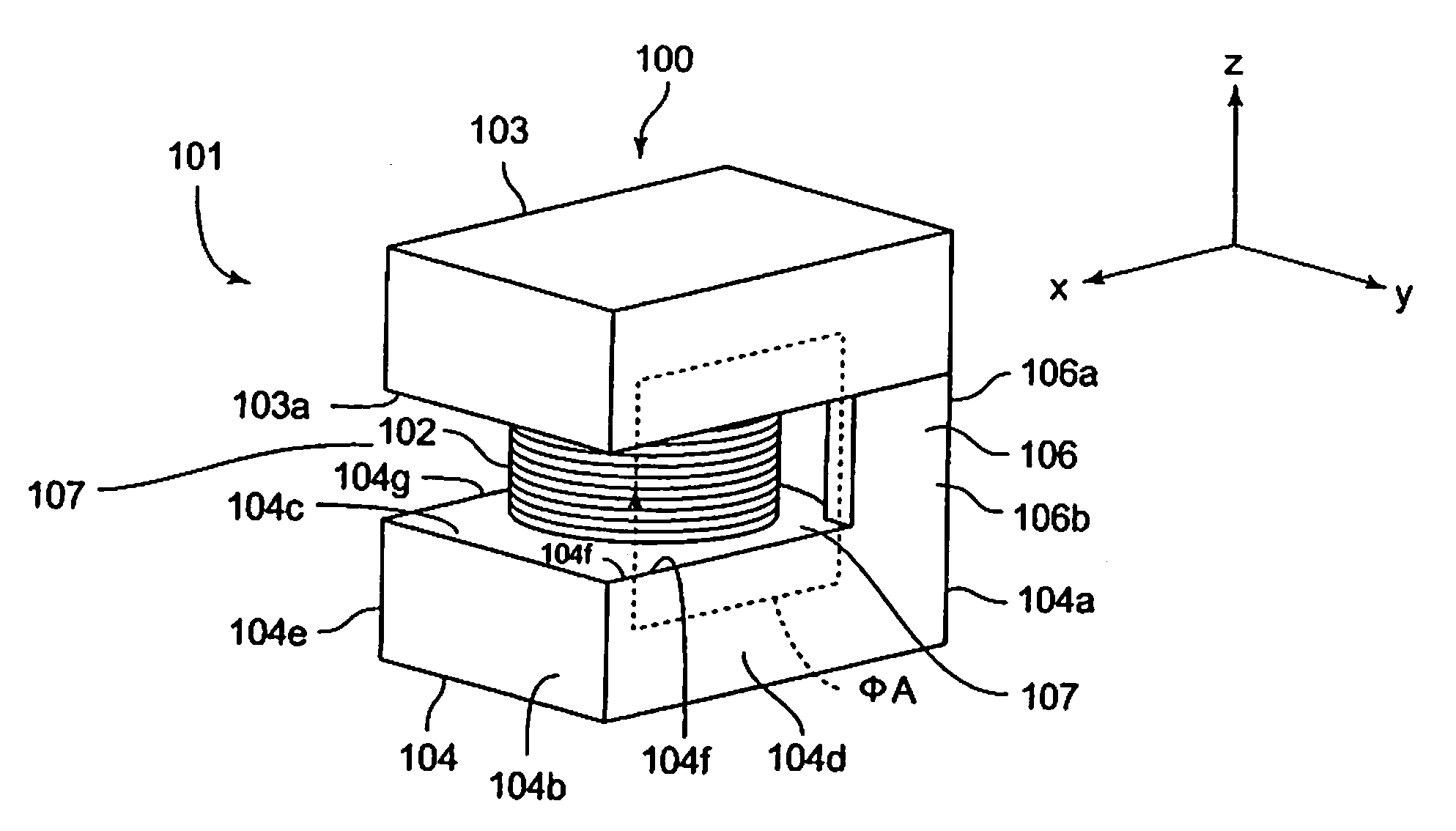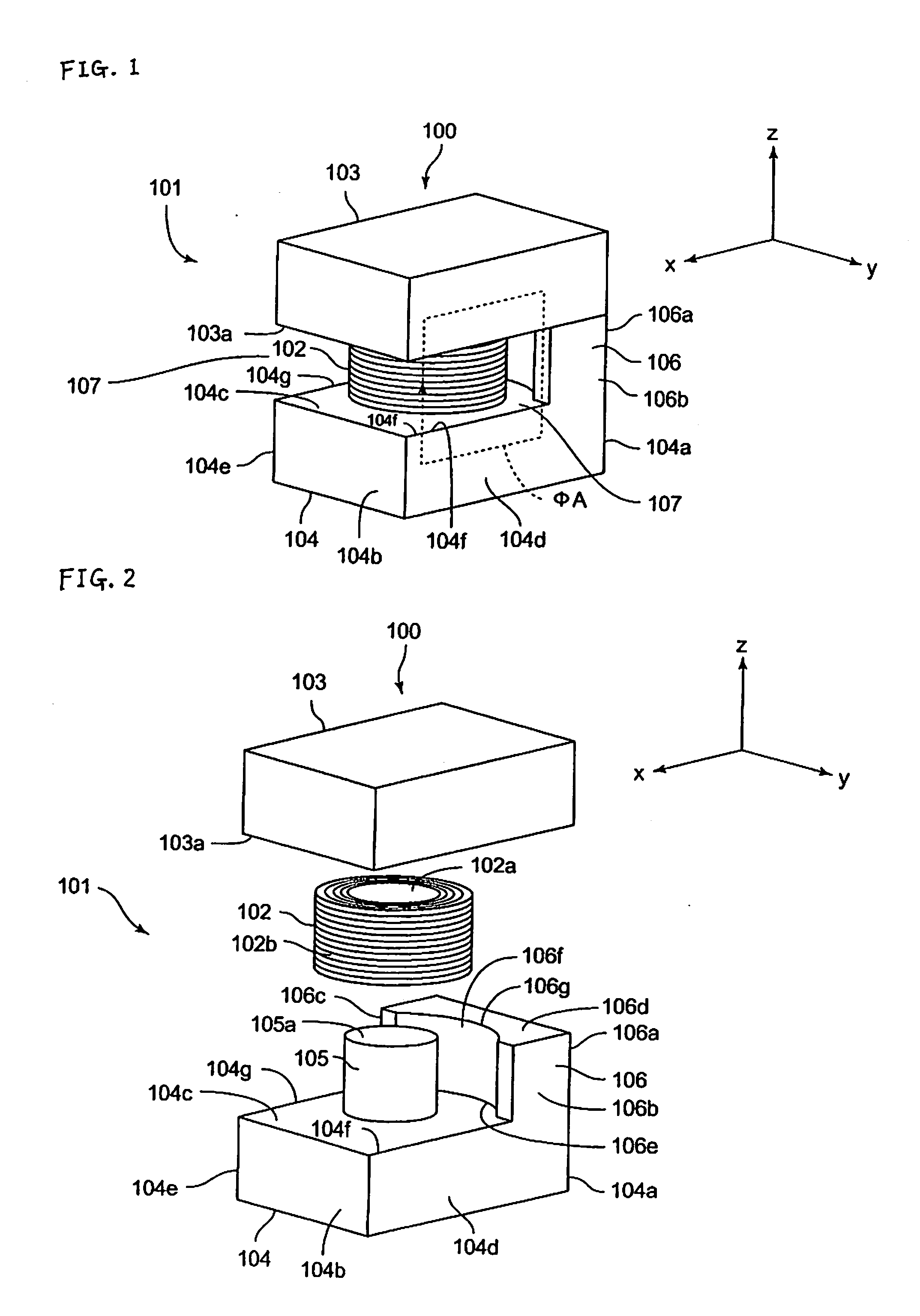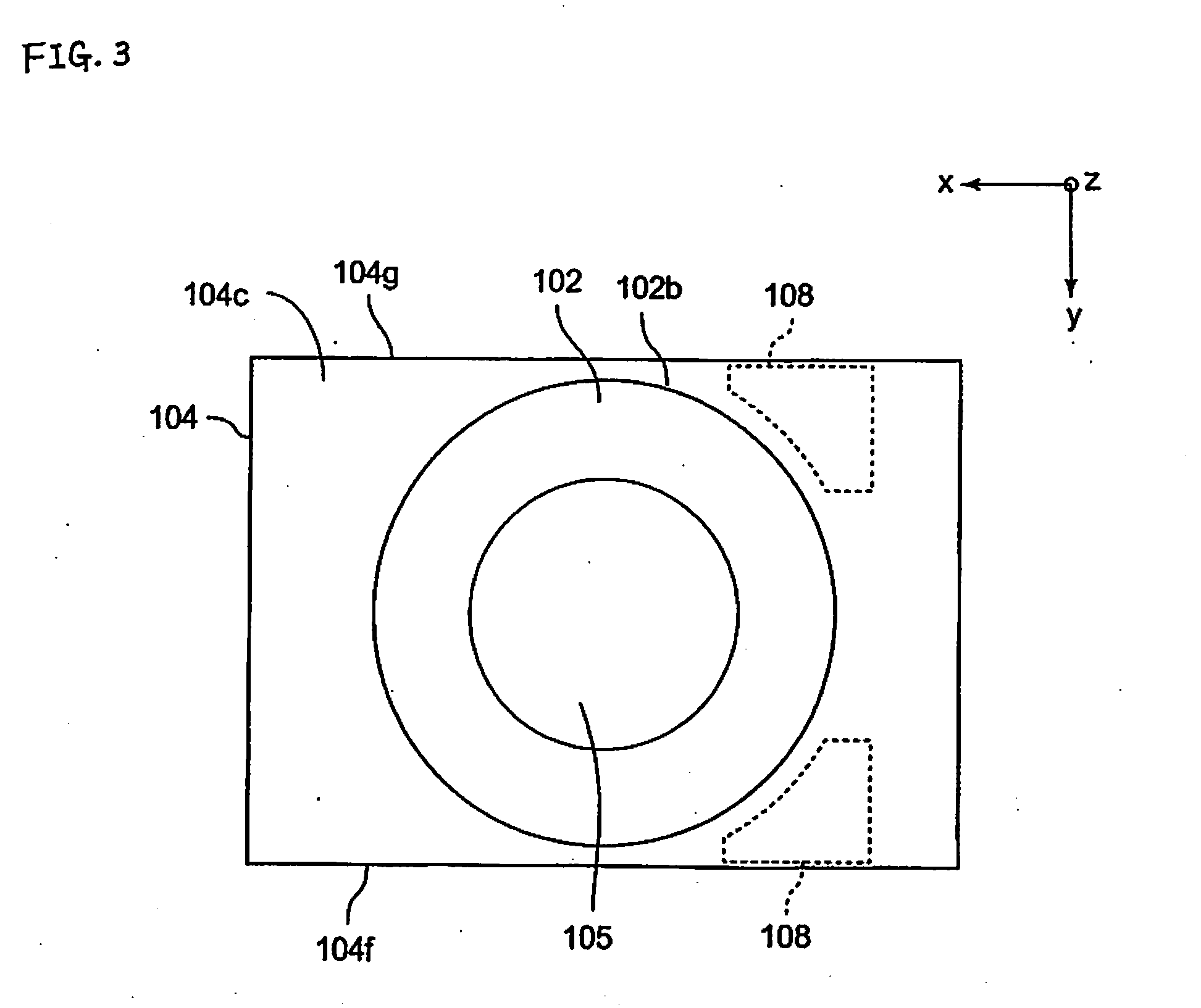Magnetic Element
a technology of magnetic elements and windings, which is applied in the direction of basic electric elements, transformers/inductance details, etc., can solve the problems of insufficient inductance value, difficulty in pulling out the ends of the coil around the winding axis of the drum core, and difficulty in increasing the number of windings of the coil, so as to reduce the leakage of magnetic flux, increase the saturation magnetic flux density, and relax the restriction on the number of windings
- Summary
- Abstract
- Description
- Claims
- Application Information
AI Technical Summary
Benefits of technology
Problems solved by technology
Method used
Image
Examples
first embodiment
[0060]First, a description is given of a first embodiment of a magnetic element according to the present invention.
[0061]FIG. 1 is a perspective view of a magnetic element according to the first embodiment of the present invention. In addition, FIG. 2 is an exploded perspective view of the magnetic element shown in FIG. 1.
[0062]An inductance element 100 as a magnetic element has a core unit 101 and a coil 102. The core unit 101 has planar cores 103, 104, a center core 105, and a side core 106. The planar cores 103, 104 are wholly thin, flat, rectangular solids in the long direction of the center core 105, and both have substantially identical shapes.
[0063]In the following description, a direction from a short side surface 104a to a short side surface 104b of the planar core 104 is referred to as the front (front side), the reverse direction thereof is referred to as the rear (rear side), a right-hand direction, looking from the rear toward the front, is referred to as right (right s...
second embodiment
[0088]A description is now given of a magnetic element according to a second embodiment of the present invention.
[0089]FIG. 5 is a perspective view of a magnetic element according to a second embodiment of the present invention. In addition, FIG. 6 shows an exploded perspective view of the magnetic element according to the second embodiment of the present invention. In the following description, as with FIG. 1 through FIG. 3, in the drawings the X-axis direction is front (the front side), the Y-axis direction is left (the left side), and the Z-axis direction is up (the top side).
[0090]The inductance element 200 as a magnetic element has a core unit 201 and two coils 202, 203. The core unit 201 has planar cores 204, 205, center cores 206, 207, and a side core 208. The planar cores 204, 205 overall are vertically flattened rectangular bodies, both having substantially the same shape. The center cores 206, 207 are columnar in shape, having their long directions in the vertical directio...
third embodiment
[0115]A description is now given of a magnetic element according to a third embodiment of the present invention.
[0116]FIG. 7 is a perspective view of the magnetic element according to the third embodiment of the present invention. In addition, FIG. 8 is an exploded perspective view of the magnetic element according to the third embodiment of the present invention. In the following description, as with FIG. 1 through FIG. 3, in the drawings the X-axis direction is front (the front side), the Y-axis direction is left (the left side), and the Z-axis direction is up (the top side).
[0117]The inductance element 300 as a magnetic element has a core unit 301 and two coils 302, 303. The core unit 301 has planar cores 304, 305, center cores 306, 307, and side cores 308, 309. The planar cores 304, 305 overall are vertically flattened rectangular bodies, both having substantially the same shape. The center cores 306, 307 are columnar in shape, having their long directions in the vertical direct...
PUM
| Property | Measurement | Unit |
|---|---|---|
| height | aaaaa | aaaaa |
| magnetic | aaaaa | aaaaa |
| area | aaaaa | aaaaa |
Abstract
Description
Claims
Application Information
 Login to View More
Login to View More - R&D
- Intellectual Property
- Life Sciences
- Materials
- Tech Scout
- Unparalleled Data Quality
- Higher Quality Content
- 60% Fewer Hallucinations
Browse by: Latest US Patents, China's latest patents, Technical Efficacy Thesaurus, Application Domain, Technology Topic, Popular Technical Reports.
© 2025 PatSnap. All rights reserved.Legal|Privacy policy|Modern Slavery Act Transparency Statement|Sitemap|About US| Contact US: help@patsnap.com



